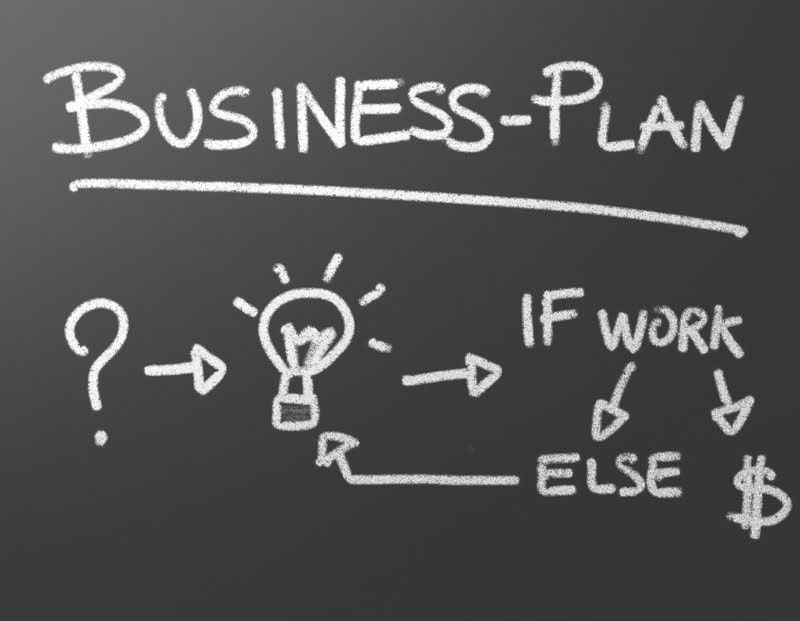An archetypical pattern to the entrepreneur’s journey…or not?

In “The Hero with a Thousand Faces,” Joseph Cambell described a narrative pattern for the archetypical hero’s journey. Every hero story, from Luke Skywalker to Neo, follows this structure.
I wanted to explore if such an archetypical pattern also exists for entrepreneurs. While based on my own 7-year journey, I’ve shared the story with enough entrepreneurs and interviewed enough serial entrepreneurs to think it does. I’d love to get your thoughts in the comments below.
Stage 1: Entrepreneurs Are Artists (Creation)
Like many entrepreneurs, I was initially driven by an inexplicable need to “create something awesome.” To build something so unique that it changes the world.
I started my first company in 2002 around a big vision of connecting everyone on the planet, sparked by the “6 Degrees of Separation” concept — that all of us are connected by six people or less.
Yes, this was the basis of what eventually became “social networking.”
Like a lot of first-time entrepreneurs, I embraced stealth.
I felt this idea was so compelling that just telling another person before my implementation of the idea was ready would jeopardize my first-mover advantage.
I stayed heads-down for over a year and solely focused on building out my product with a small team that I had sworn into secrecy. But despite my best attempts, the secret still got out.
When we were ~3 months away from launching, Friendster came out with their social network — then half a dozen others quickly followed.
You cannot stop an idea whose time has come.
Despite my attempts at secrecy, others independently arrived at the same idea. This isn’t a unique phenomenon. Two different inventors concurrently and independently invented the telephone. At this exact moment, there are at least a handful of people somewhere in the world with the same idea as yours.
But here’s the kicker.
Being first isn’t an unfair advantage, but an unfair disadvantage.
I was attempting to use stealth to have a first-mover advantage, but almost all of the first movers in that space (including Friendster) are no longer around. The biggest winner so far, Facebook, wasn’t first.
They were #12 or so in line. This, too, isn’t a unique phenomenon. While the idea spark gets things rolling, being first doesn’t guarantee success, and there is evidence to suggest quite the opposite. Take a look at all these companies: Microsoft, Apple, Google, Ford, Toyota, and Facebook.
None of them were first either (in the respective categories, they are best known). Rather, they were all fast followers who out-learned and out-executed the first pioneers in their markets.
I would argue that being truly first isn’t an unfair advantage and can even be an unfair disadvantage because not only do you have to educate a new market, but you also have to build the right solution at the same time.
Entrepreneurs have another gift: The ability to rationalize anything.
With my social networking product, I grew okay with other competitors entering the market because I rationalized that my solution was different. Unlike everyone else, we were building our social network on privacy and decentralization (built on a peer-to-peer network). And I was convinced that our difference would ultimately win out in the end. After all, who would want to publicly share their life away on the Internet?
Back then, I didn’t know how to test this fundamental belief without building out a complete product. That was an expensive lesson learned.
My problem wasn’t the idea or the vision. My problem was locking myself too early, and for too long, to a specific solution that, while different, was built on an untested leap of faith — that proved to be incorrect.
Key Takeaways:
- Stealth is a really bad launch strategy.
- Be different, but make sure your difference matters.
- Test your riskiest assumptions as early as possible.
Stage 2: Artists Need to Eat (Monetization)
Fairly early on, you have to figure out how you are going to build enough runway to support your creative addiction.
I had bootstrapped my company up until this point, but resources were starting to run low. Capital was tight back in 2002, but I was determined to find a way forward.
Up until now, I thought all I needed to do was to build a great product, and everything else would take care of itself. Customers and investors would see the elegance of my solution, and the business model would take care of itself.
After things didn’t pan out exactly that way, my focus shifted from just building out an awesome solution to building a working business model — aka finding paying customers.
The difference between a hobby and a business is revenue.
By this time, I had also moved away from stealth and had started blogging about my ideas on social networking, privacy, and decentralization. An entrepreneur in Norway found me through one of my blog posts. He ended up licensing our technology and became my first paying customer.
You could say that was a lucky break, but there was more to it than that. Had I not shared my ideas, I wouldn’t have been featured on the front page of Sun Microsystems' product page, and I wouldn’t have been found at all.
The amount of serendipity that will occur in your life, your Luck Surface Area, is directly proportional to the degree to which you do something you’re passionate about combined with the total number of people to whom this is effectively communicated.
— Jason Roberts, “How to Increase Your Luck Surface Area”
I then launched a few more products that eventually turned the business cash flow positive. During this time, I went from a specialist (coder) to a generalist (designer, builder, and marketer).
There’s no shortage of learning resources online and offline. The key to moving forward is:
- Knowing what you need to learn.
- Then go learn just enough of it to solve your problem.
- Rinse and repeat.
This stage was about learning how to survive — specifically, how to make money. Yes, making money is a skill.
Too many entrepreneurs get stuck in the artist stage. They continue to undervalue their art and don’t learn how to market and sell effectively. They use cost-based pricing, where they figure out what something costs them to make, slap a modest margin, and set pricing. This approach often leaves too much value on the table. A more effective approach is value-based pricing, where you need to figure out who is buying, what value they derive, how to find them, and then build a mafia offer that explicitly anchors against that.
Mafia Offer: An offer your customers can’t refuse.
Key Takeaways:
- Making money is a skill.
- A working business model, not your solution, is the true product.
- Sharing your ideas is key to getting them to spread. Getting your ideas to spread is key to getting to a working business model.
Stage 3: Artists Must Constantly Reinvent Themselves (Destruction -> Purpose)
Even though I was now fairly comfortable in the business from a revenue perspective, there was still a problem.
I had become a company with a “solution looking for problems to solve.” As a result, I found viable customers and markets in unexpected places. While that isn’t necessarily bad by itself, the problem was that I found myself with more passion for my solution than my type of customers or their problems.
People start businesses for many different reasons. Making money is definitely one of them. But I find that while money is an initial driver, it’s kind of like oxygen. You need oxygen to live, but don’t live for oxygen. Once your basic needs are met, entrepreneurs look for something more.
They look for purpose.
I was forced to confront my customer problem–passion disconnect. I saw two options. I could either hire for the missing passion, or I could sell my company.
Around that time, I started working on another pet peeve of mine. While I built many products over the years, my cycle time between products was too long.
Life’s too short to build something nobody wants.
I was introspectively searching for a better and faster method for vetting new product ideas because I realized that I had more ideas than time. That’s when I also ran into Steve Blank's and Eric Ries's early work on the Lean Startup. Many of their ideas resonated with me at a visceral level, and I decided to join in on the conversation. I hit the reset button and started a new blog — where I openly shared my learning on the side as I searched for answers myself.
By way of writing, I discovered an audience of other entrepreneurs who, like me, were making the same mistakes and looking for answers to the same problems. This blog took off and became the launch pad of my first book, more products to follow, and subsequently, a new company — LEANSTACK.
Unlike my last company, which was founded around a passion for the solution, LEANSTACK was founded around a passion for the customer (entrepreneurs) and a big problem worth solving (the startup failure rate). It took me seven years to navigate my way from stage 1 to stage 3. My goal is to help the next generation of entrepreneurs do this faster.
Fast forwarding to today, this fundamental mind-shift from solution to customer and problem has allowed me to explore, test, kill off, and launch multiple products (from books to software to coaching products) in record time — while having a blast along the way.
Key Takeaways:
- Once basic needs are met, entrepreneurs seek purpose.
- Having more passion for the solution than the problem is a problem.
- Love the Problem, Not the Solution.
Is this Your Story?
Is there an entrepreneur archetype pattern here or not? Whether you recognize certain aspects of your journey or you completely disagree, leave a comment below.

